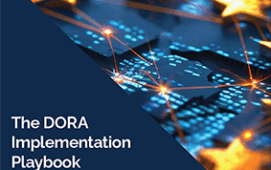This week we’re publishing our long-awaited special report on the LEI: ‘What the Global Legal Entity Identifier Will Mean for Your Firm’. Frankly, it’s purpose is to do what it says on the tin: to help you figure out what you need to do about the most talked about development after the iPhone 5 (I like mine, by the way; how are you finding yours?).
Thanks to the generosity of our sponsors – Alacra, Bloomberg, Joss Technology, SIX Financial Information, SWIFT and Thomson Reuters – you can download the report for free from here. Moreover, the conversation will continue on October 3, when Bloomberg, Thomson Reuters and the Depository Trust & Clearing Corp. (DTCC), will join Your Truly in a live webinar discussion (you can sign up here) about how to manage the emerging LEI and CICI standards, and what the FSB’s ‘urgent review’ of the structure of the LEI number might mean. It promises to be an interesting debate.
It’s hard to believe that as early as the 2009 Group of 20 summit in Pittsburgh the industry had recognised the need for greater transparency as part of a wider package of reforms aimed at mitigating the systemic risk posed by the OTC derivatives market. That realisation ultimately led to the Dodd Frank Act, and industry calls for a standard legal entity identifier (LEI).
Fast-forward to today, and there is every chance that the industry will achieve that vision – to establish a framework for registering and maintaining unique entity identifiers on a global basis – within the next nine to 12 months.
Most observers will concede that getting from there to here as involved a slightly circuitous route, one that saw a ‘ready-made’ solution emanating from the US rejected in favour of a more international initiative, and the early release of an ‘interim’ identifier – in the form of the CICI, the CFTC Interim Compliant Identifier.
And neither has today’s solution – yet to be realised, of course – been without its own controversies, with some contention in particular around the decision not to introduce some degree of ‘intelligence’ into the agreed-upon, 20-digit identifier.
But most important is the success of the project. While not assured, the LEI framework adopted by the Financial Stability Board (FSB) of the European Central Bank looks set to achieve what it set out to do. And that’s a big improvement over the International Business Entity Identifier (IBEI) initiative of almost a decade ago, which died a death due to the usual mix of vested interests and political infighting.
This time around was different, though.
The string of failures that included Bear Stearns and AIG, and ultimately ended in 2008 with the default of Lehman Brothers, convinced the industry – and the regulators – that something had to be done.
As regulators and industry participants examined how to address the lack of transparency in that particular marketplace, it became obvious that in order to achieve central counterparty clearing, exchange-based trading of derivative instruments and timely regulatory reporting, a standard identifier was needed first. Indeed, so pressing was the need that the CFTC launched its CICI as soon as it was able.
There remains much work to be done.
By March 2013, the FSB’s model should be ready for primetime. But event then, the model is expected to be extended to a wide range of asset classes, possibly starting with FX derivatives, repurchase agreements and structured products.
Practitioners have until the spring – or even sooner if they’re to adopt the CFTC’s CICI, which comes on stream in a matter of weeks – to get their LEI houses in order.
Our report taps into the expertise of innovators in the space, offering insight into the potential benefits of the LEI, and some guidance on how best to realise those benefits.
We hope you find it useful.
Subscribe to our newsletter




